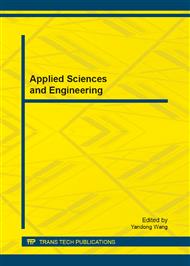p.367
p.372
p.376
p.381
p.386
p.391
p.396
p.401
p.409
Research on the Pattern and Application of Hybrid Power System
Abstract:
To overcome the limitations of traditional classification about hybrid power system, the analytical method of energy input-output are introduced into. From the viewpoint of energy input and hybrid power output, this paper classified hybrid power system pattern into four types that are applicable to a wider scope of hybrid power technology. Then, an overview of stirling engine (SE) that is well adapt to various energies and friendly to the environment was provided. In order to fully utilize solar energy, biomass energy and other clean renewable energy, a kind of stirling engine integrated with multi-energy platform was designed, by combined with the corresponding combustion chamber device. Finally, SE thermoelectric hybrid power system was constructed to take full advantage of the good characteristics of stirling engine and compensate for its shortcomings, that provides an effective way to the development and utilization of clean energy and advanced power technique.
Info:
Periodical:
Pages:
386-390
Citation:
Online since:
September 2012
Authors:
Keywords:
Price:
Сopyright:
© 2012 Trans Tech Publications Ltd. All Rights Reserved
Share:
Citation:


